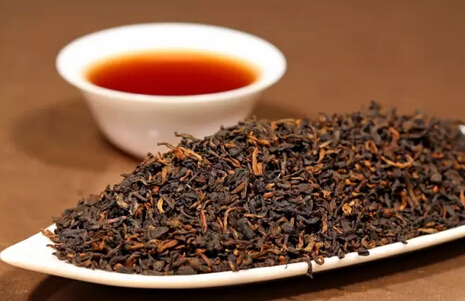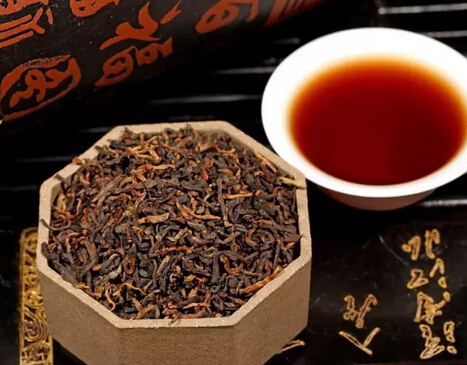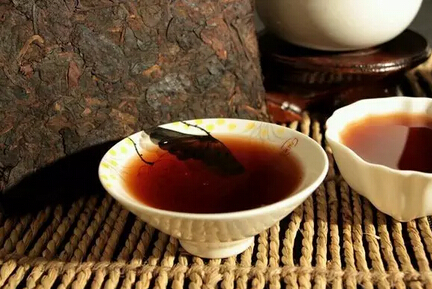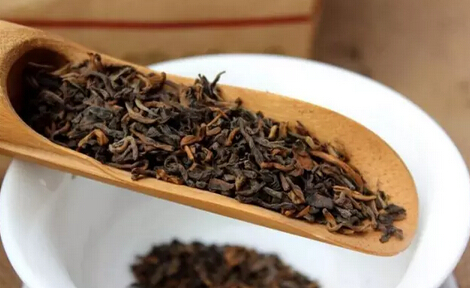In simple terms, ripe tea is a type of Pu-erh tea made from Yunnan large-leaf sun-dried raw tea, processed through fermentation and other techniques.
For a long time, it has been widely believed that ripe tea, having undergone fermentation, has already expended its later vitality, acquiring the taste that would otherwise take decades to develop. Coupled with the historically non-refined raw materials, ripe tea has not been the mainstream choice for collection compared to raw tea. In terms of drinking, ripe tea is more about functionality than appreciation for tea enthusiasts.
Ripe tea has a reddish-brown color, a pure and mellow taste, and a unique aged aroma. It is loved by beauty-conscious individuals and middle-aged and elderly consumers who focus on health preservation for its effects such as fat reduction, lowering the three highs (blood pressure, blood sugar, and cholesterol), and aiding sleep. So, what conditions should a good ripe tea meet?

Good ripe tea should first be comfortable to drink, and secondly, the price should be reasonable.
As the saying goes, tea is "treasured when it suits the palate," provided it is not moldy or spoiled and does not cause discomfort to the body or throat.
Most new ripe teas on the market, due to short production time, have strong fermentation odors and poor taste after artificial fermentation and high-temperature steaming, making it difficult to find high-quality ripe teas that are pleasant to drink. However, many merchants, in pursuit of quick capital turnover, release unaged products directly into the market, disappointing tea lovers about the existence of good ripe tea.
If ripe tea is considered affordable, it is by no means something that can be recognized for "nine yuan nine with free shipping," which only leads to disappointment.
Truly good ripe tea can withstand the test of the market and consumers, with prices recognized by tea connoisseurs for premium ripe tea. Outstanding cost performance and sweet, rich taste make it a staple tea for ripe tea consumers.
Later ripe tea products have gained consumer recognition for their high cost performance and mellow taste. Affordable ripe tea has also made many tea lovers feel it is hard to come by, indicating that the demand for premium ripe tea is currently in short supply.

Good ripe tea is actually very active and highly collectible.
First, raw materials are key. Picking ancient tea trees with long tree ages and growing in ecologically sound, fertile soil will have a head start. Rich content is the reaction substrate for fermentation, allowing ripe tea to win directly at the starting line.
Good raw materials, even with high risks and hardships, can produce good ripe tea, whereas poor-quality raw materials cannot possibly make good ripe tea.
Second, the process needs to be professional, strict, and standardized. Tea leaves stir-fried by experienced masters with sensitive hands using traditional copper pot killing of greens are vastly different in quality from machine-killed greens. There is also the sun-drying process, where tea leaves are exposed to direct sunlight in spacious drying areas, reaching the perfect ground temperature of 50-60 degrees Celsius. This not only dries the tea leaves just right for long-lasting fragrance but also preserves the tea's activity, allowing active microbial enzyme reactions during later fermentation.
Finally, there is the professional and standardized fermentation process, led by experienced masters, with frequent observations and measurements of temperature and humidity and regular pile turning.

Good ripe tea should have rich content and high health preservation value.
Through fermentation, spring tea gains traits such as freshness, briskness, and sweetness. However, spring tea, with its many buds and high tenderness, is often used to make raw tea, with high raw material costs and difficult fermentation.
Compared to raw tea, ripe tea is more suitable for drinking at night and can be enhanced with honey, chrysanthemums, etc., to increase health value and balance taste. As for why good ripe tea is loved by consumers, drinking tea means drinking good tea. Good tea should not only be healthy but also understood. Whether for health preservation or self-cultivation, good ripe tea is an excellent choice.

Causes of unpleasant tastes in ripe tea.
1. Sourness. Generally, this is due to under-fermentation. Sometimes, to leave room for aging, light fermentation is pursued. However, if not controlled well, it can be too light, resulting in thinness, lack of thickness, or sourness. Another case is when the fermentation temperature is too low, causing sourness that is hard to remove even after decades.
2. Numbness and throat dryness. Mostly, this is due to over-fermentation, the opposite of the previous case. Such tea often starts mild but gradually causes numbness in the mouth and dryness in the throat. The leaves of such tea often show severe carbonization, indicating over-fermentation.
3. Off-flavors. Various off-flavors, most commonly a muddy taste. The most likely cause is unqualified raw materials. For example, roasted tea has lost its activity and can no longer cultivate beneficial microorganisms. Staying in a humid and hot environment for a long time, it develops indescribable flavors, which is normal.
4. Thinness. This is first related to raw materials. Using mountain garden hand-sun-dried tea and conscious blending before fermentation is best. Preferably, 30% from Lincang and 70% from Menghai, resulting in a rich and balanced tea character.